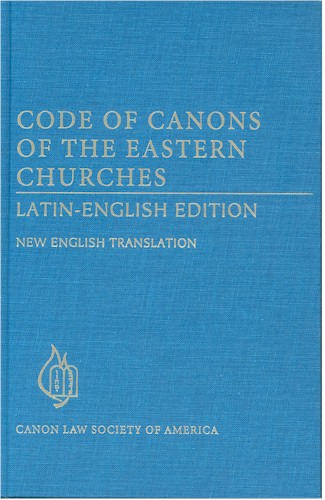|
To work for the proper implementation of canon law is to play an extraordinarily constructive role in continuing the redemptive mission of Christ. Pope John Paul II |
|
|
|
|
Resolution 1152 x 864 |
Updated 10 jan 2013 |
Review of William Brennen, Abortion Holocaust: Today's Final Solution (Landmark, 1983) 237 pp. |
|
Edward Peters, Review of W. Brennan, The abortion holocaust: Today's Final Solution, in Faith & Reason 10 (1984) 88-91.
|
It
is called by some the "New Scholarship," and it appears with particular
strength in such fields as psychology, history, and sociology. Actually, though,
the adjective "new" is superfluous: what we are seeing is simply
"scholarship"-rigorous, honest, and erudite; "new" only in
the sense that such scholarship, especially in the social studies has been
singularly missing from the major centers of academia.
To take but one example,
Richard Peters (no relation to this reviewer), writing for Chronicles of
Culture (March, 1983) has penned what editor Leopold Tyrmand termed
"the opening salvo in the battle to reclaim Freud from the liberals."
The
reality principle [writes Peters] is the core of psychoanalytic treatment...What results from such process is not only a person who is aware of his
history and its effects upon him, but also a person who understands the
consequences of his own and others' behavior, one who takes responsibility for
his own actions, and expects other people to take responsibility for their
behavior and its consequences. Obviously, liberals and social apologists
of every political shade are not going to lie [this] sort of thinking or any
discipline that encourages this kind of realism.
It
is not difficult, then, to see how such scholarship might indeed strike one as
new.
Probably nowhere, however, has the liberal proclivity
for orchestrated ignorance, distortion, and indeed deliberate lies, been more
established, or borne more tragic consequences, than in the social utopian's
sacred cow of pre-meditated abortion. Although it has taken 40 years to realize
the fact that Nazi Germany was not contrary to the cant of liberal orthodoxy
conservatism incarnate (it was, of course, avowedly socialist), thanks to an
important recent contribution to sociology's "new scholarship," we can
more quickly dispose of the myths that Hitler was anti-abortion (read: antiabortionists
are just little Hitlers) or that the Holocaust bears no similarity to what takes
place daily in American abortion chambers.
In the course of his landmark Abortion and the Conscience of the Nation, (Human Life Review, Spring 1983) Ronald Reagan called upon "another William Brennen—not the Justice" to underscore the dangers to a nation which tolerates intentional destruction of innocent human life. Reagan choose well: There is probably no other American scholar so wellinformed of the medical, legal, and social forces which were brought to bear in the Nazi war on innocents, and who has drawn with more chilling acuity their near-exact repetition by American abortionists, than William Brennen of the St. Louis University School of Social Service.
The
sheer magnitude of the tragedy wrought by the abortion network will be an
obstacle to public acceptance of Brennen's thesis, in much the same way that the
sheer magnitude of the Nazi extermination effort has long given grounds for a
small-but recently growing-view that the Nazi Holocaust simply could not
have happened. But the facts belie the myths. Over ten
million innocent human beings have been killed by abortionists since
the Supreme Court's contribution to the social agenda in 1973; this despite
incontrovertible proof that human life is present from fertilization-or even
amid the unbelievable gall of piecing together little human bodies after an
induced abortion to make sure nothing was left behind, or giving birth to
"candy apple" babies whose skin has been burned away by caustic
saline. Still, is this any more unbelievable than the Nazis tossing living
children into red-hot incinerators on busy days at the death camp, or dragging
bodies out of the gas chambers with pointed rods like so much meat on a hook?
The mind balks at such irrationality, the heart stops at such concerted cruelty.
Although
his heart must have experienced the "profound sadness" described by
Right-to-Life leader Ann O'Donnell, Brennen's mind worked all the more
diligently in his preparation of this invaluable comparison of the Nazi death
camp mentality and the American abortionist mentality. He has covered, I think,
every important fact of the subject; his "new scholarship" will bring
social utopians face-to-face with some harsh, nay gruesome, realities.
From
the very outset of this study he assails with refreshing vitality the sacrosanct
canons of abortion orthodoxy, beginning with the claim that German abortion laws
were tightened up after Hitler took over. "The truth," says Brennen,
"is just the other way around."
Pre-Hitler
Germany had probably the tightest restrictions against elective abortion
anywhere in the civilized world. The same type of wide-spread agitation in
medical and legal circles which dominated the American scene prior to 1973 had
been unable to make more than a few dents in the German protection of unborn
human life. But all that changed when Hitler assumed power.
Brennen
carefully documents the following parallels between post-Hitler Germany and
post-Roe America:
Of
course, to catalogue here the similarities between the Nazi war on innocents and
its American counterpart is impossible; what Brennen records in over 200 pages
we will try to capsulize in a few words: Hitler described Jews as
"parasites" on the body of Europe, abortionists describe unborn
children as "parasites" on the body of the mother; Dying Slavs
remained hidden behind gas chamber walls, while outside flowers bloomed and
music was played, unborn children die while hidden behind the uterine wall,
while plants decorate abortion waiting rooms and music is piped in; the abortionists
defends his actions as being "legal," the same excuse offered by Nazi
war criminals; both Nazi exterminators and abortionists have conducted
experiments of still living victims, and made commercial use of victims’
bodies; I.G. Farben stock doubled in value during the period it produced Zyklon-B
death gas; Upjohn Chemical stock nearly doubled in value after it announced
plans to manufacture a suppository abortion agent; The Nazi euthanasia program
was carried out by the "Charitable Foundation for Institutional Care,"
the IRS grants tax-exempt status to abortion mills as "charitable
organizations" engaged in "promoting health"; Only twice in its
2,500 year history has the non-sectarian Hippocratic Oath-with its unreserved
condemnation of deliberate abortion-been seriously challenged: once in Nazi
Germany and now in contemporary America.
In the course of his study, Brennen also examines the complicity of the German press in creating the social climate necessary to accept (or at least to hide) the killing of innocent human beings, and the like complicity of the American press in fostering our willingness to tolerate feticide today. Disturbing examples abound:
The same press which reveled in pictures of babies
burned by napalm in Vietnam cringes hypocritically from pictures of babies
burned by saline in abortion mills. And when six out of seven world class
experts give un compromising testimony of the humanity of unborn children before
a Senate subcommittee, the one individual who expresses a few vague,
unscientific doubts on the matter is adulated by the New York Times with
his picture and an accompanying article dwelling almost exclusively of his
personal predilections, nearly completely ignoring the overwhelming testimony
offered by the other scientists. Such unbiased and honest reporting has not been
seen since the days when Goebbels ran the Ministry of Propaganda.
Concluding his article on conservativism and
psychoanalysis, Richard Peters looks back with regret on his years of quiet
indignation over the abuse by liberals of psychoanalysis and its leading
figures. "Belatedly," he writes, "I am aware that silent scorn is
only a refuge from responsibility." Surely, there is a strong, if silent
scorn for abortionists among physicians, lawyers, academics, and civil servants.
Peter goes on, "the world will belong to the activists and, therefore, if I
have real convictions about the kind of world I want to live in, I must be an
activist." The "new scholarship," it seems, offers more than
simply scholarship.
With the publication of The Abortion Holocaust: Today's Final Solution, William Brennen definitively establishes himself as an activist for the unborn, as one whose scholarship cannot be ignored by the abortion elite, and must not be ignored by the American public.
|





